Related Research Articles
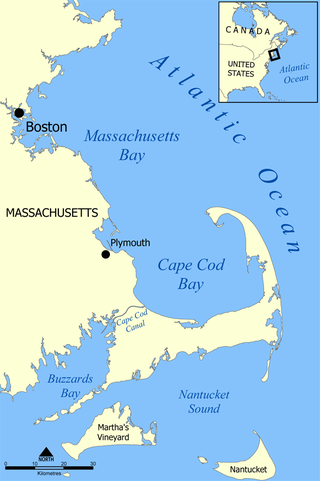
Massachusetts Bay is a bay on the Gulf of Maine that forms part of the central coastline of the Commonwealth of Massachusetts.

The Port Chicago disaster was a deadly munitions explosion of the ship SS E. A. Bryan on July 17, 1944, at the Port Chicago Naval Magazine in Port Chicago, California, United States. Munitions while being loaded onto a cargo vessel bound for the Pacific Theater of Operations, detonated killing 320 sailors and civilians and injuring 390 others. Two-thirds of the dead and injured were enlisted African American sailors.

USS Mount Hood (AE-11) was the lead ship of her class of ammunition ships for the United States Navy in World War II. She was the first ship named after Mount Hood, a volcano in the Cascade Range in the US state of Oregon. On 10 November 1944, shortly after 18 men had departed for shore leave, the rest of the crew were killed when the ship exploded in Seeadler Harbor at Manus Island in Papua New Guinea. The ship was obliterated while also sinking or severely damaging 22 smaller craft nearby.
There have been many extremely large explosions, accidental and intentional, caused by modern high explosives, boiling liquid expanding vapour explosions (BLEVEs), older explosives such as gunpowder, volatile petroleum-based fuels such as gasoline, and other chemical reactions. This list contains the largest known examples, sorted by date. An unambiguous ranking in order of severity is not possible; a 1994 study by historian Jay White of 130 large explosions suggested that they need to be ranked by an overall effect of power, quantity, radius, loss of life and property destruction, but concluded that such rankings are difficult to assess.

The RAF Fauld explosion was a military accident which occurred at 11:11 am on Monday, 27 November 1944 at the RAF Fauld underground munitions storage depot in Staffordshire, England. It was one of the largest non-nuclear explosions in history and the largest on UK soil.

USS Solar (DE-221), a Buckley-class destroyer escort of the United States Navy, was named in honor of Boatswain's Mate First Class Adolfo Solar (1900–1941), who was killed in action during the Japanese attack on Pearl Harbor on 7 December 1941.
The Naval Ammunition Depot Hastings near Hastings, Nebraska was the largest United States World War II naval munitions plant operating from 1942 to 1946 and produced over 40% of the U.S. Navy's munitions.

USS LST-519 was an LST-491-class tank landing ship built for the U.S. Navy in World War II. She was later renamed USS Calhoun County (LST-519) after counties in eleven states in the United States.
The Hingham Naval Ammunition Depot Annex, sometimes called the “Cohasset Annex” or "Hingham Annex" by local residents, covered sections of the towns of Hingham, Cohasset, Norwell, and Scituate Massachusetts. It served as an annex to the Hingham Naval Ammunition Depot.

Operation CHASE was a United States Department of Defense program for the disposal of unwanted munitions at sea from May 1964 until the early 1970s. Munitions were loaded onto ships to be scuttled once they were at least 250 miles offshore. While most of the sinkings involved conventional weapons, four of them involved chemical weapons. The disposal site for the chemical weapons was a three-mile (5 km) area of the Atlantic Ocean between the coast of the U.S. state of Florida and the Bahamas. Other weapons were disposed of in various locations in the Atlantic and Pacific oceans. The CHASE program was preceded by the United States Army disposal of 8,000 short tons of mustard and lewisite chemical warfare gas aboard the scuttled SS William C. Ralston in April 1958. These ships were sunk by having Explosive Ordnance Disposal (EOD) teams open seacocks on the ship after they arrived at the disposal site. The typical Liberty ship sank about three hours after the seacocks were opened.
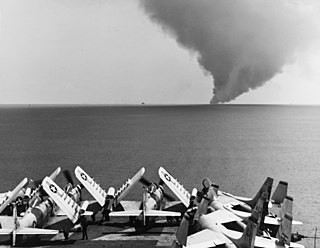
On 29 July 1967, a fire broke out on board the aircraft carrier USS Forrestal after an electrical anomaly caused a Zuni rocket on an F-4B Phantom to fire, striking an external fuel tank of an A-4 Skyhawk. The flammable jet fuel spilled across the flight deck, ignited, and triggered a chain reaction of explosions that killed 134 sailors and injured 161. At the time, Forrestal was engaged in combat operations in the Gulf of Tonkin, during the Vietnam War. The ship survived, but with damage exceeding US$72 million, not including the damage to aircraft. Future United States Senator John McCain and future four-star admiral and U.S. Pacific Fleet Commander Ronald J. Zlatoper were among the survivors. Another on-board officer, Lieutenant Tom Treanore, later returned to the ship as her commander and retired an admiral.

USS Zircon (PY-16) was the private yacht Nakhoda acquired by the United States Navy in 1940 serving as an armed yacht from 1941 to 1946. The yacht Nakhoda was built for automobile executive Frederick J. Fisher by Pusey and Jones Corporation, Wilmington, Delaware delivered in 1930. After the war the yacht was sold and reverted to the original name until sold in 1951 to the United New York Sandy Hook Pilots Association and renamed New York.

The Hingham Naval Ammunition Depot, is a former United States Navy ammunition depot located in Hingham, Massachusetts. At its peak, it employed over 2,400 people. It also consisted of 90 buildings at that time. The Hingham Naval Ammunition Depot Annex was located nearby, and served as a storage area for the depot.
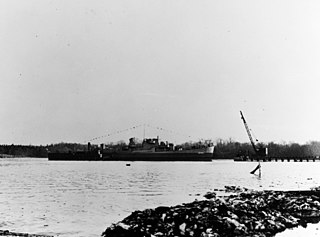
USS Lough (DE-586) was a Rudderow-class destroyer escort in service with the United States Navy from 1944 to 1946. She was sold for scrapping in 1970.
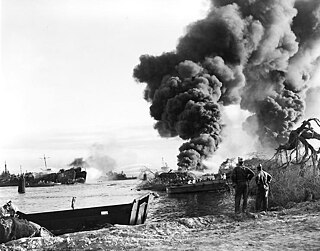
The West Loch Disaster was a maritime accident during World War II at Pearl Harbor U.S. Naval Base in Hawaii. The incident, which occurred just after 3 p.m. on Sunday, 21 May 1944, began following an explosion in a staging area for Landing Ships, Tank (LSTs) and other amphibious assault ships in West Loch. A fire quickly spread among the ships being prepared for Operation Forager, the invasion of the Japanese-held Mariana Islands. Over the next 24 hours, six LSTs sank, 163 naval personnel died, and 396 were injured.

The SS Quinault Victory was the thirty-first Victory ship built by Oregon Shipbuilding Corporation in Portland, Oregon under the auspices of the Emergency Shipbuilding Program in support of America's involvement in World War II. Laid-down on 3 May 1944 and launched on 17 June), Quinault Victory was delivered to the War Shipping Administration and subsequently leased to the United States Lines Company.
HMS Dakins (K550) was a Captain-class frigate of the Royal Navy during the Second World War. Built as the Buckley-class destroyer escort DE-85 intended for the United States Navy, she was transferred to the Royal Navy in 1943 under the terms of Lend-Lease.

The 1969 USS Enterprise fire was a major fire and series of explosions that broke out aboard USS Enterprise on January 14, 1969, off the coast of Oahu, Hawaii. After a Zuni rocket detonated under a plane's wing, the ensuing fire touched off more munitions, blowing holes in the flight deck that allowed burning jet fuel to enter the ship. The blaze killed 28 sailors, injured 314, and destroyed 15 aircraft. The cost of replacing the aircraft and repairing the ship topped $126 million. Even graver damage was likely prevented by improvements made after the similar 1967 USS Forrestal fire.
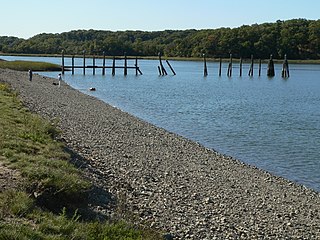
Bare Cove Park is a 484 acre park designated for wildlife and public recreation. It is located in Hingham, Massachusetts, on the Weymouth Back River across from Great Esker Park.
References
- ↑ "YF-415". NavSource Online. Retrieved 6 April 2020.
- 1 2 3 4 "USS YF-415". Northern Atlantic Dive Expeditions. Retrieved 6 April 2020.
- ↑ Rose, Jim (3 May 2012). "Remembering a deadly explosion off Hingham 68 years later". The Patriot Ledger . Quincy, MA. Retrieved 4 February 2024.
- ↑ "Hingham's Military, Veteran and War Memorials". Hingham Town Hall. Retrieved 5 February 2024.
- ↑ Rose, Jim (2019). "75th Anniversary of Depot Tragedy" (PDF). Friends of Wompatuck (51). Retrieved 5 February 2024.
- ↑ "2012: JB Mills memorializes crew from 1944 depot tragedy". Hingham Unity Council. 30 January 2021. Retrieved 5 February 2024.